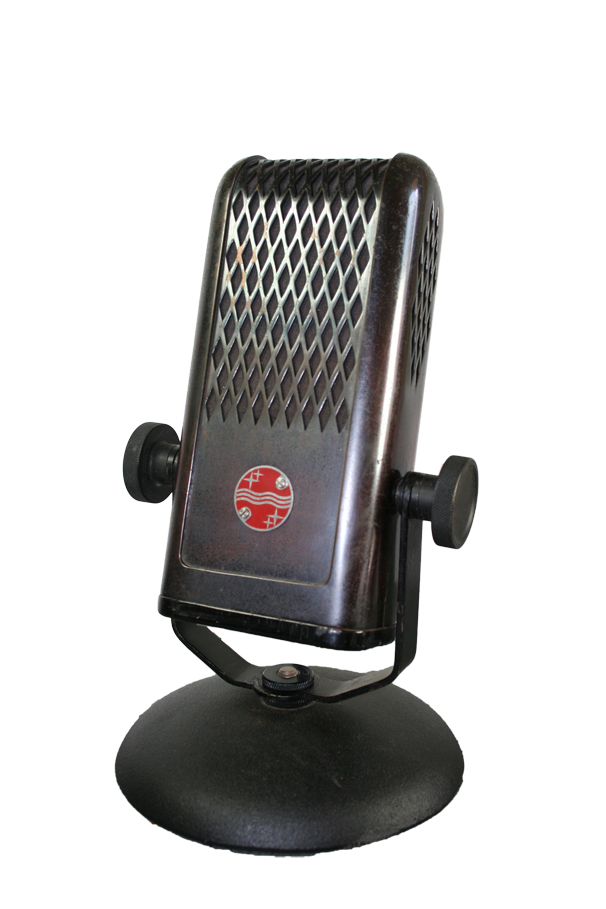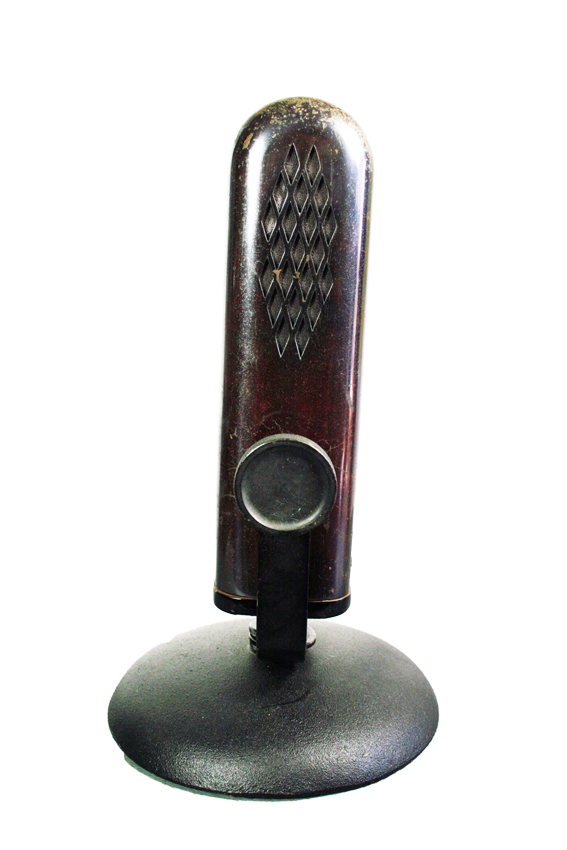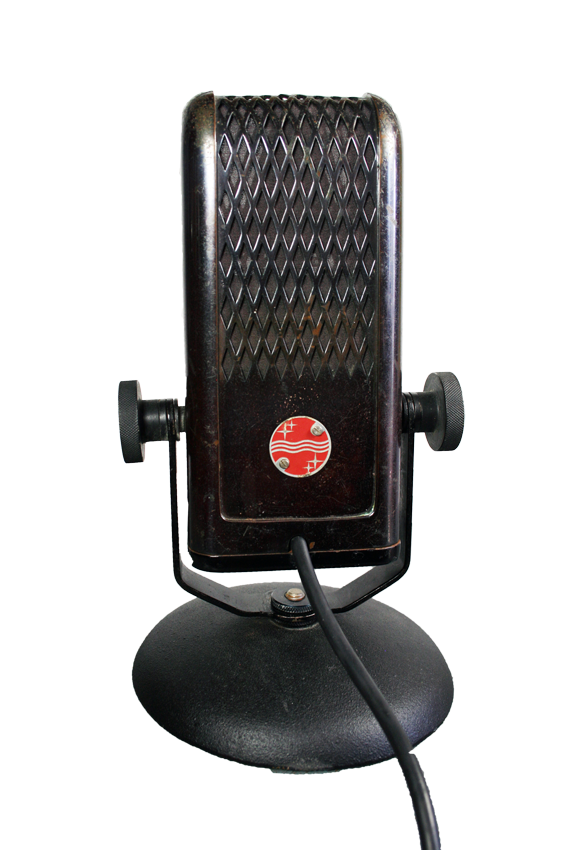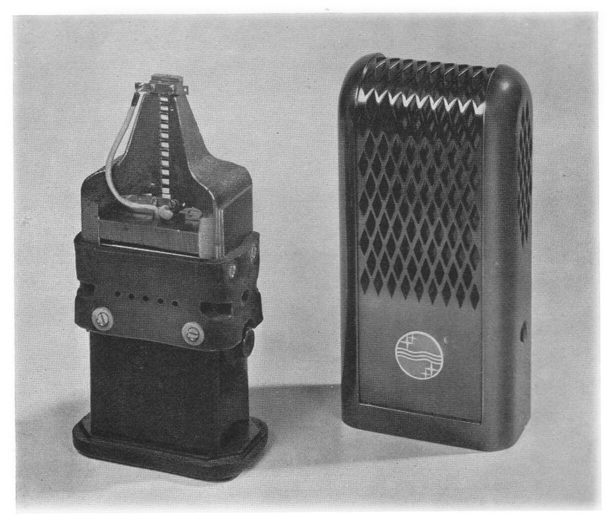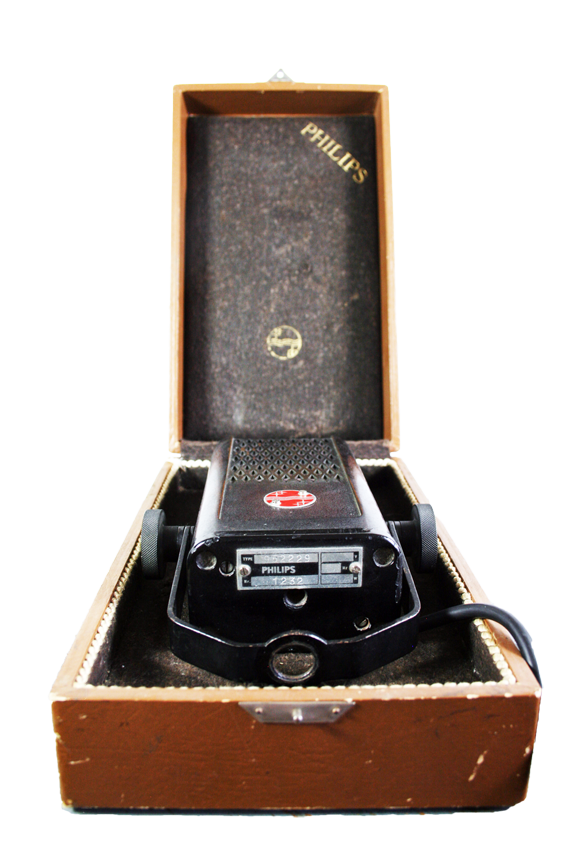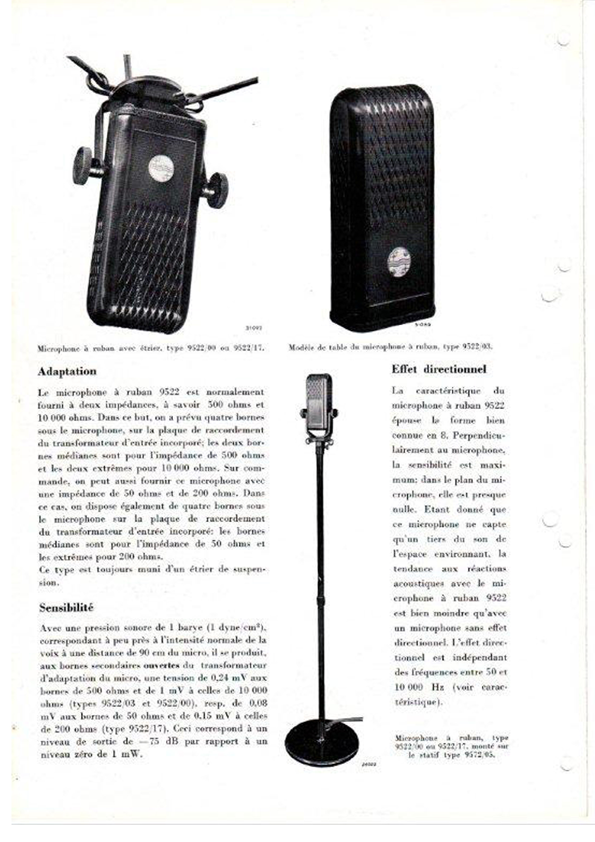|
This huge and heavy Art Deco beast (195 x 91 x 55 mm / 2,75 Kg without yoke ) was Philips' second attempt at ribbon microphone design.
It was first made around 1938 and their flagship, according to Philips: "The reproduction quality and sensitivity of the Philips ribbon microphones are such that they are particularly suitable for cases where the most demanding requirements are required, such as in modern radio and sound film studios.
For this application, the directional effect of the ribbon microphones (sensibility following a directional curve in the form of 8, sensitivity in the microphone plane practically = 0) is most favorable. This quality makes it possible to arrange the microphone in the most favorable position for capturing the sound, which means that the disturbing ambient noise is not reproduced by the microphone or, in any case, very weakly.
The directional effect of the Philips ribbon microphones is absolutely identical for all frequencies between 50 and 8000 p / s; for higher frequencies the differences are so small that they are not perceptible.The vibrating part, the ribbon, is executed and assembled with a very special care, which ensures a uniform sensitivity over the whole range of the frequencies, in other words: one managed to realize an absolutely natural reproduction, without the need to insert an auxiliary preamplifier correcting the frequency curve."
Like most ribbons it was for indoor use only, since the ribbons themselves were too fragile for outside use.
Philips was always very 'creative' with its patents and thus found ways to use other companies designs, with slight 'improvements'. In this case use of their own magnet material and an elastique suspension (a piece of rubber - see b&w picture) between the upper and lower part of the insides to reduce contact noises.
The metal cover was probably inspired by the designs of Raymond Loewy, who often came up with streamlined shapes for bulky devices. Unfortunately this audibly resonates the recorded sound. Philips' sucessor, the 9559 (mic of the month September 2016) had a much improved cover that did not colour the sound.
The microphone was available in different versions: the stand version 9522/00 with 500 & 10000 ohms output and the 9522/17 for 50/200 ohms and the table versions (without nobs and yoke) 9522/03 and 9522/23. Oddly enough the number on my 9522 is 9522/29. Around 1946 production ended.
Many more types feature in my book Witnesses of Words.. More information about that can be found at www.witnessesofwords.com
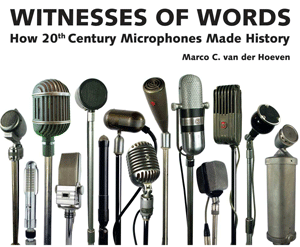
|
|
|
|
|
|
Top: the impressive shape of the 9522
Middle: side and back view
Below: sound, opened table version, showing the elastique suspension (photo Philips), 9522 in its original box, and French info from 1942 |
Listen to the sound of the 9522:
|
|
|
|
|


 Video's
Video's Contact
Contact


